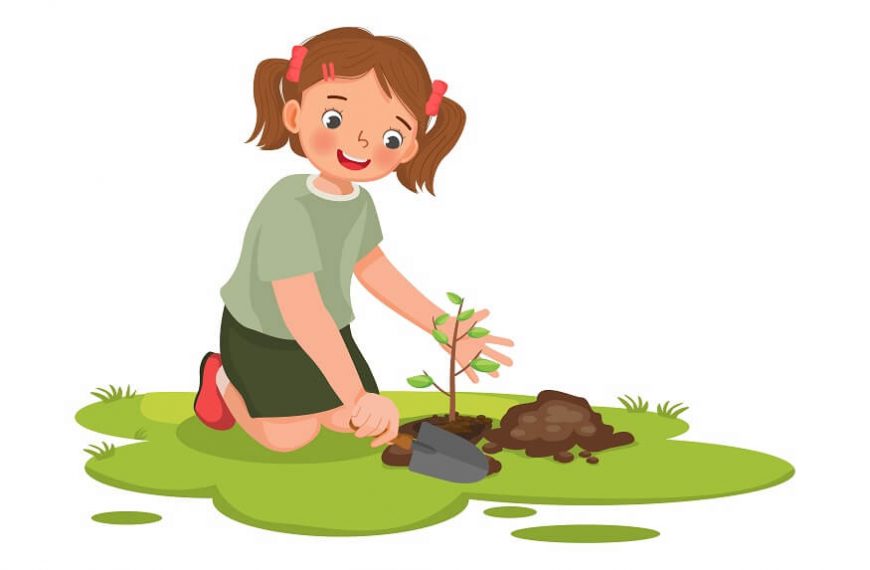It is increasingly important to teach our children the value of trees and their impact on the environment in a world that is gradually becoming more urbanised. We can encourage a sense of responsibility and environmental consciousness in the future generation by teaching children the value of planting trees. This article explores many methods for teaching youngsters about the significance of trees in our lives and the importance of environmental education for children, highlighting the importance of trees for kids aged. So let’s explore the significance of planting trees and the value of trees for children.
Importance of Trees for Kids
- Trees Clean the Air
- Biodiversity Support
- Climate Regulation
- Water Conservation
By collecting dangerous pollutants like carbon dioxide and releasing oxygen, which is necessary for all life, trees serve as natural air cleaners. Children can better grasp the critical function trees play in keeping breathable air by having this process explained to them.
Children become aware of how their simple act of planting a tree can help to improve the air quality in their surroundings as they learn about the significance of trees in cleansing the air. Encouragement to plant saplings gives them the knowledge they need to make informed decisions about how to improve the environment.
Many different animal species have habitats in trees. By providing food, shelter, and breeding grounds for different creatures, they help establish a balanced ecosystem that teaches children about the interconnection of all living things.
By playing interactive games and engaging in role-playing exercises, kids can learn about biodiversity. For instance, students may act out various creatures and talk about how important trees are to their survival. Playing these games helps students understand how trees maintain the diverse range of life on Earth.
The climate is greatly influenced by trees. They reduce the consequences of climate change by absorbing carbon dioxide, a greenhouse gas that causes global warming. Children who learn about this relationship are better equipped to support a greener, healthier Earth.
Engage youngsters in experiments that demonstrate the carbon cycle to help them comprehend the idea of climate regulation. You may build a model to show how trees use photosynthesis to take in carbon dioxide from the atmosphere and release oxygen into the atmosphere. The value of trees in halting climate change is reaffirmed by this interactive educational experience.
Tree roots serve as both natural water filters and a means of reducing soil erosion. Trees help groundwater recharge and ensure a steady water supply for both people and wildlife by reducing precipitation runoff.
Through fun projects, kids may learn about water conservation. Set up two soil-filled containers, one with a tree planted inside and the other without. Fill both containers with water, then compare how much of it is retained. They will learn how trees contribute to water conservation via this demonstration.
Environmental Education for Kids: Nurturing Eco-Friendly Minds
- Hands-On Planting Activities
- Nature Walks and Observations
- Community Involvement
Kids can see the growth process firsthand by helping to plant trees and care for seedlings. This practical exposure creates a greater love of the natural world and instils a sense of environmental responsibility.
Children can actively participate in planting and caring for trees by attending tree-planting events that are organised by schools and communities. As individuals see their trees develop over time, these experiences help to form lifelong memories and give people a sense of success.
Children can view different trees, plants, and animals in their native environments by going on nature walks. Encourage children to enquire, recognize species, and discover each one’s distinctive traits.
Take kids on nature hikes and help them identify various tree species and talk about how they fit into the environment. Help children comprehend the traits of different trees, such as their growth patterns, bark textures, and leaf forms. Children can have a closer relationship with nature if their curiosity and observation skills are encouraged.
Plan communal tree-planting activities where children and adults can both participate. This promotes a sense of community and gives kids the tools they need to actively participate in greening their environment.
Children who take part in neighbourhood tree-planting campaigns grow to feel a sense of duty and belonging. To increase the impact of these activities, encourage them to bring their friends and family.
Planting Trees: Activities for Kids to Make a Difference
- Create a “Tree of Knowledge”
- Tree Adoption Program
- Nature Journals
Encourage children to design or sketch a tree with branches that symbolise many facets of the tree’s significance. They can mark the branches with advantages like pure air, animal refuge, and others.
Their comprehension of the many roles trees play in our lives is strengthened by this creative activity, which also improves their artistic abilities. These trees can be put on display by educators and parents in their homes or classrooms to serve as ongoing reminders of the value of trees.
Children can also show their “Tree of Knowledge” to friends and family members, raising awareness of the value of trees and inspiring others to support environmental preservation.
Introduce a tree adoption program in local communities or schools. Giving each youngster a tree to take care of will help them understand the value of being responsible and protecting the environment.
Children who participate in the “Tree Adoption Programme” might develop a close relationship with the tree they adopt. They learn about dedication and the beneficial effects that even modest actions may have on the environment by caring for their tree.
Give children nature diaries to use as a record of their observations while on nature hikes. Encourage children to draw pictures of trees, record wildlife sightings, and write about their feelings and views about nature.
Children can use nature notebooks as a creative outlet to share their passion for the natural world. Drawing or writing about the trees kids come across while on their outdoor explorations aids in memory retention and fosters a closer bond with the natural world.
The importance of Trees for Kids and Environmental Education for Kids is essential for shaping eco-friendly adults. By teaching children about the value of trees and the significance of planting trees, we can nurture the seeds of environmental consciousness and create a brighter future. Through a number of programs, EuroKids, a pioneer in the field of education, supports environmental education for children aged. Help us develop young minds so they can protect the environment and build a more promising, sustainable future.
Remember that teaching young people about the value of trees now will result in a world that is healthier and more sustainable for future generations. Together, let’s sow the seeds of change and flourish!
















